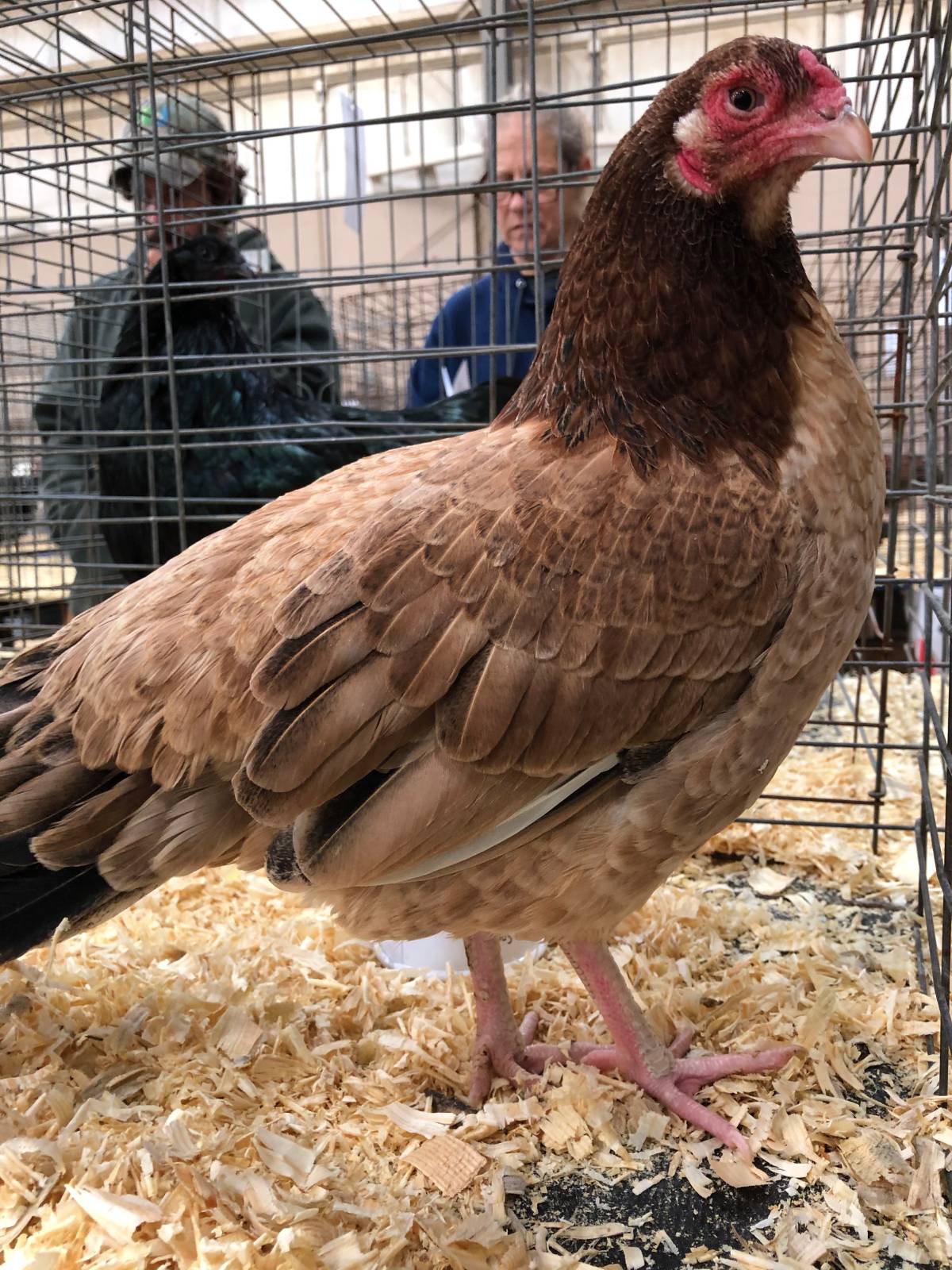
With a unique “lobster tail,” lack of spurs, and overall tameness with people, Cubalaya chickens make an excellent dual-purpose addition to your flock. Unfortunately, they’re currently listed as “Critical” according to The Livestock Conservancy and need some homestead heroes to prevent them from becoming extinct.
- Status: Critical
- Use: Eggs, meat, ornamental
- Eggs: 125-175 white to tinted eggs a year
- Egg Size: Small to medium
- Weight: Male 6 pounds/ Female 4 pounds
- Temperament: Can be aggressive to other birds: noisy, mild-mannered compared to other game birds: friendly with people
- Characteristics: Tolerant of high heat and humidity, stunning birds for backyard flocks
Cubalayas in Crisis
For a poultry breed to be listed as Critical by The Livestock Conservancy, there needs to be fewer than 500 breeding birds in the United States, with five or fewer primary breeding flocks (50 birds or more), and an estimated global population less than 1,000.
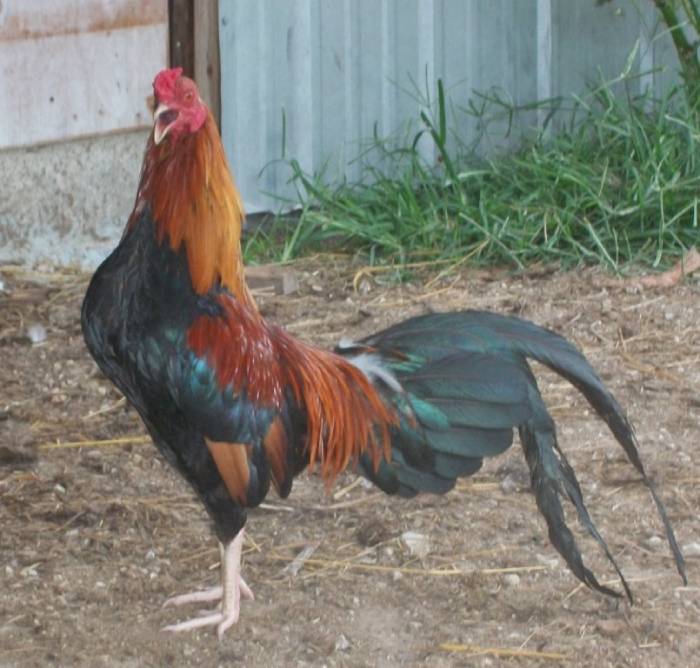
Jeff Smith, third generation at Cackle Hatchery, breeds bantam Cubalayas. They started with one color variation of the Cubalaya 40 years ago, which were obtained from a hobbyist at a poultry show. Since then, they’ve reverted them back to a wheat color and a BB red (black-breasted red).
“The black-breasted red is a little bit more reddish in the saddle, hackles, and neck hackles,” Smith explains. “The wheat are more of an orangey-type of red. Some of the main characteristics of Cubalaya are that they have a low carriage tail, kind of like a pheasant-type body, and a small pea comb on their head.”
Smith says that Cubalayas are one of the rarest chicken breeds available.
“There aren’t too many of them. I don’t even remember seeing them at the Ohio Nationals. It was kind of frightening how many breeds weren’t at the Ohio Nationals. There are several breeds that I’m needing new bloodlines on, and I’m having a hard time finding them.”
He says that a lot of the “old-time breeders” are retiring and phasing out, and no one’s replacing them and their flocks.
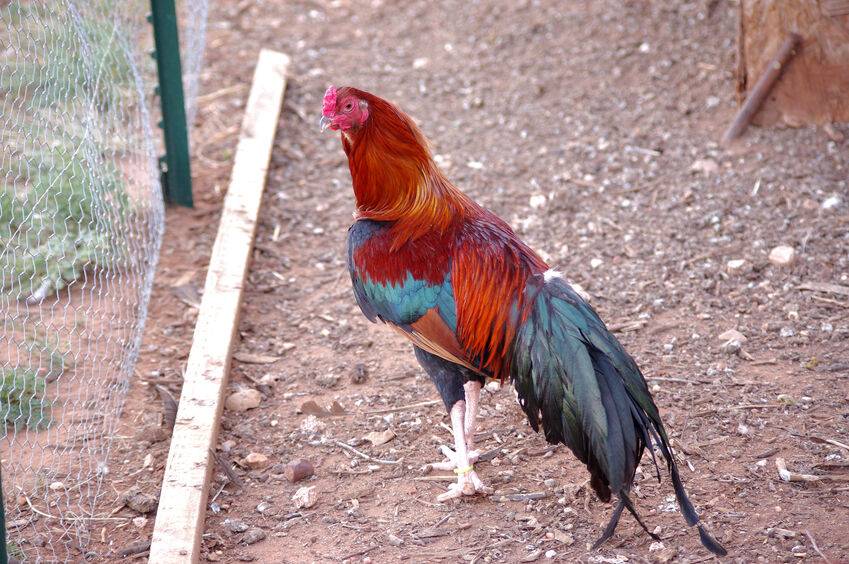
“Some people consider Cubalayas a game chicken, in the sense that they’re gamey and they like to fight other males,” Smith says. “But they’re not bred on the game side; they’re fine to be in pens with other males.”
According to The Livestock Conservancy, “The Cubalaya is the only chicken breed that’s officially recognized by the Asociación Nacional de Avicultura, the Cuban national poultry association. The breed was introduced in the U.S. and was accepted into the American Poultry Association’s Standard of Perfection in 1939, with the breed name ‘Cubalaya’ in honor of Cuba, where the breed originated. They were also first exhibited in the U.S. that same year at the International Poultry Show in Cleveland, Ohio.”
Smith doesn’t know why their popularity has declined. They’re tolerant of high heat and humidity, are beautiful, and are good meat and egg birds.
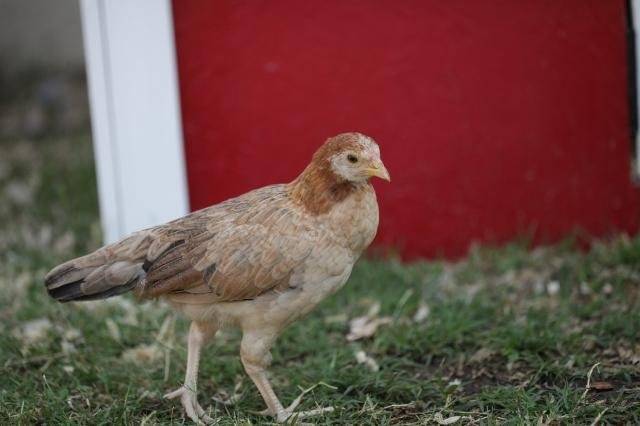
“It’s hard to tell. We try to figure out increasing our breeding stock on certain breeds, thinking that there’d be a higher demand for them, and there’s no rhyme or reason. We can put out extra, and certain breeds are popular for two years and then nobody wants them.”
It’s hard to dictate or project the future, Smith says. Smith has been involved with Cackle Hatchery pretty much his entire life.
Cackle Hatchery started in 1936 and has a long history of breeding and shipping poultry to U.S. customers.
“We’re more on the quality side. Not to say we don’t have some generic, basic backyard chickens, but we also work with fancy and rare breeds and try to breed them to the APA standard,” Smith says. “We have some heritage breeds and production breeds. We probably have the largest selection of quality birds in the United States.”
They typically don’t offer breeds unless they have at least 50 breeding hens available. With the Cubalaya being Critical, they typically run one male for every 6 to 10 hens, and occasionally breed pairs. They only breed yearlings and don’t breed birds that are older than two years, typically. They have around 36 hens to a pen with four roosters.
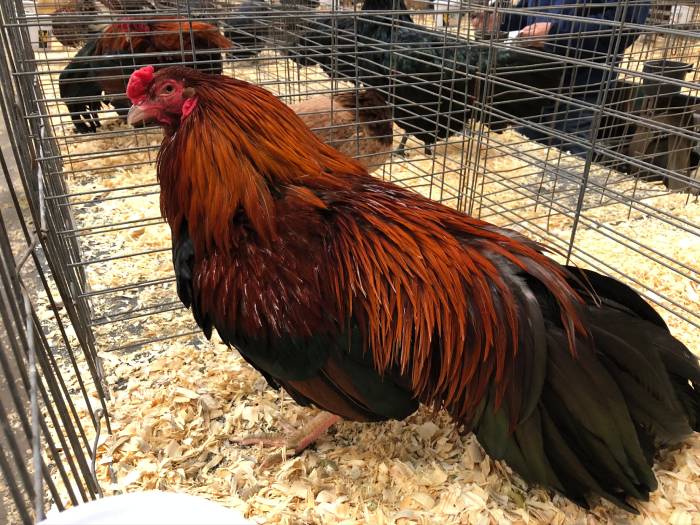
“We primarily don’t put all of our breeding stock in one place due to avian influenza, tornadoes, and other kinds of disasters,” Smith says. “We have our genetics in all different places within about a 40-mile radius of Cackle Hatchery here in Lebanon, Missouri. Most of our breeding stock is housed and taken care of by Amish families, and we do all the managing, culling, grading, testing, and everything that needs to happen in the breeding program.”
The families who raise them also feed, water, and do common husbandry with the fertile eggs brought in every seven days to the hatchery. Balancing a rare breed’s population, but not giving into low standards, can be a bit tricky.
“We’ll grade them as chicks. We might grade out 10 percent as baby chicks, and then we put them out as a straight run. We have lots of males to pick from and we’ll only keep maybe 10 percent of the males and the other 90 percent we grade out. So, it’s pretty heavy grading and culling that we do.”
Smith says that there sometimes is backlash when you talk about grading and culling, but the reality is every hatchery does it, and that’s how they maintain breeds.
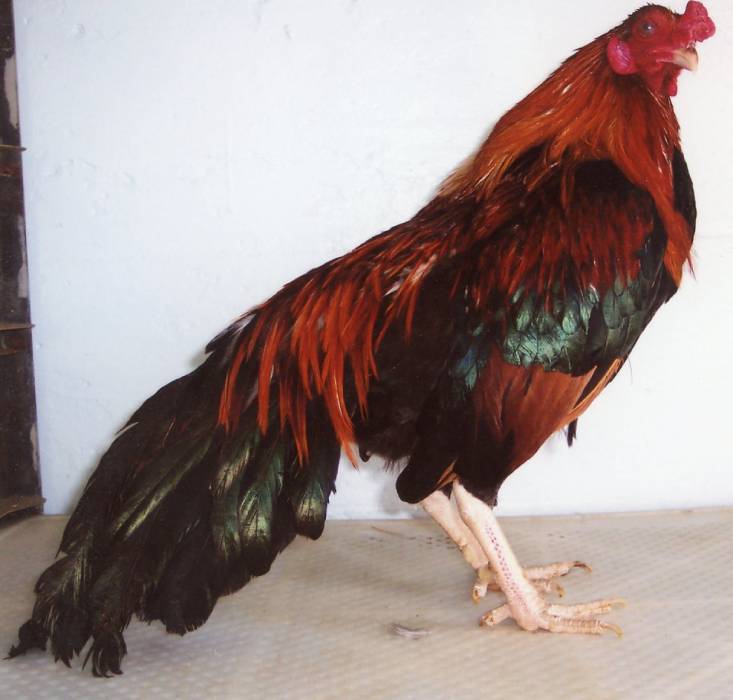
“We’re a breeding farm, breeding livestock, and there are certain qualities that you have to maintain, so you try to select the best to perpetuate that breed variety and its qualities,” Smith says.
Smith adds that backyard poultry hobbyists should add Cubalaya to their flocks.
“They’re a gentle bird when you interact with them and take care of them. They’re a very good bird to handle and they’re unique, so it’d be a bird that not everybody has. You won’t have the competition showing them and you can stand out at a poultry show with a breed that’s not found very often!”
Originally published in the August/ September 2025 issue of Backyard Poultry and regularly vetted for accuracy.
…
backyardpoultry.iamcountryside.com
Feed Name : Backyard Poultry
Chickens 101,critical breed
hashtags : #Critical #Cubalaya #Chicken #Backyard #Poultry






Leave A Comment